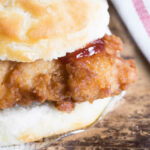Pickleball, a sport rapidly gaining popularity, combines elements of tennis, badminton, and ping-pong. Like any sport, understanding the rules is key to enjoying the game and playing effectively. Serving is the fundamental action that starts each point, and in pickleball, there are two primary serve types: the volley serve and the increasingly popular drop serve. This guide will focus specifically on the Pickleball Drop Serve Rules, breaking down everything you need to know to serve legally and strategically, whether you’re just starting out or looking to refine your game.
What is a Pickleball Drop Serve?
The drop serve is a newer addition to pickleball, officially recognized in 2022 to simplify the serve and make the game more accessible, particularly for beginners. Unlike the traditional volley serve where you strike the ball in the air, the drop serve requires the ball to bounce once before you hit it. This seemingly small change significantly alters the serving motion and opens up new strategic possibilities on the court.
Drop Serve Rules: The Essentials
The beauty of the drop serve lies in its simplicity. While the volley serve has several specific requirements regarding paddle position and swing motion, the drop serve is more lenient, focusing on a few key principles:
-
Foot Position: Just like with any pickleball serve, your feet must be behind the baseline when serving. At least one foot must be on the ground and behind the baseline. You cannot step on or over the baseline until after you’ve contacted the ball. Your feet should also be within the imaginary extensions of the sideline and centerline.
-
Release of the Ball: This is the defining characteristic of the drop serve. You must release the ball from your hand and allow it to bounce on the ground before striking it with your paddle. The ball must be dropped from an open palm.
-
No Throwing or Propelling: You cannot throw the ball downwards or propel it upwards when dropping it. The drop should be a natural release. You’re simply letting go of the ball, allowing gravity to take over.
-
Hand Position: You can hold the ball at any height when dropping it, high or low. The crucial point is that your hand cannot impart any force to the ball as you release it.
-
Bounce Location: There are no restrictions on where the ball bounces before you hit it, as long as your feet are in the correct legal position behind the baseline. It can bounce multiple times if you wish before you make contact.
-
Paddle Contact: With the drop serve, you have complete freedom in how you strike the ball after the bounce. There are no restrictions on paddle position (waist height, wrist position etc.) as there are in the volley serve. You can hit the ball with any type of swing you choose – forehand, backhand, with spin, or flat.
Alt text: A pickleball player demonstrates the drop serve, releasing the ball from their open hand before hitting it.
Drop Serve vs. Volley Serve: Key Differences
Understanding the drop serve is easier when contrasted with the volley serve, the traditional pickleball serve. Here’s a table highlighting the main distinctions:
| Feature | Drop Serve | Volley Serve |
|---|---|---|
| Ball Bounce | Ball must bounce before being struck | Ball is struck before it bounces |
| Serving Motion | More freedom, any swing after the bounce | Underhand or backhand motion moving upwards |
| Paddle Position | No restrictions on paddle height or wrist | Paddle contact below waist, paddle head below wrist, entire paddle below serving hand |
| Complexity | Generally easier to learn and execute | More complex rules regarding swing and paddle position |
| Power Generation | Can be harder to generate significant power | Potential for more power due to direct volley |
Why Choose the Drop Serve? Advantages and Disadvantages
Both the drop serve and volley serve have their pros and cons. The drop serve has become popular for several reasons:
Advantages of the Drop Serve:
- Easier to Learn: The simplified rules make it much easier for beginners to master a legal serve quickly. This reduces faults and allows new players to get into rallies faster.
- Consistency: The drop serve can lead to more consistent serves, as the bounce provides a predictable point of contact.
- Reduced Strain: For players with shoulder or arm issues, the drop serve can be less physically demanding than the volley serve.
- Spin Control: The drop serve can make it easier to impart spin on the ball, adding another dimension to your serve strategy.
Disadvantages of the Drop Serve:
- Power Limitation: Generating significant power can be more challenging with a drop serve, as the ball’s bounce often reduces its pace.
- Court Positioning: The bounce can sometimes dictate your position and timing, potentially making it slightly less adaptable than a well-executed volley serve.
Alt text: Pickleball action shot, showing a server and receiver positioned on the court during a game.
Mastering the Drop Serve: Tips and Strategy
While the rules are simple, mastering the drop serve for strategic advantage takes practice. Here are some tips to improve your drop serve:
- Consistent Drop: Focus on a clean and consistent release of the ball. Practice dropping the ball from different heights to find what feels most natural and repeatable.
- Experiment with Spin: Try adding topspin or backspin to your drop serve. Spin can make the serve more difficult to return and can influence the bounce after it lands in the service box.
- Target Depth: Aim for a deep serve that lands closer to the baseline of the service box. A deep serve gives your opponent less time to react and move forward to the non-volley zone line.
- Vary Placement: Don’t become predictable. Practice serving to both the forehand and backhand sides of your opponent to keep them guessing.
- Practice Regularly: Consistent practice is key to developing a reliable and effective drop serve. Dedicate time to serving practice during your pickleball sessions.
Common Faults to Avoid with the Drop Serve
Even with its simpler rules, it’s still possible to fault on a drop serve. Be mindful of these common mistakes:
- Stepping over the Baseline: Ensure your feet remain behind the baseline until after you strike the ball.
- Propelling the Ball: Avoid throwing the ball downwards or upwards when dropping it. Let gravity do the work.
- Serving into the Net or Non-Volley Zone: Your serve must clear the net and land within the diagonally opposite service box, beyond the non-volley zone line. Landing on the NVZ line is a fault.
- Serving Out of Bounds: The serve must land within the boundaries of the service box.
- Incorrect Foot Position: Make sure at least one foot is on the ground and behind the baseline.
Conclusion
The pickleball drop serve is a valuable tool for players of all levels. Its ease of learning makes it an excellent starting point for beginners, while its versatility and potential for spin and strategic placement offer advanced players new avenues to explore. By understanding the rules and practicing your technique, you can master the drop serve and add a consistent and effective weapon to your pickleball game. Remember to always check for any local rule variations and enjoy the game!


